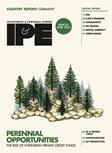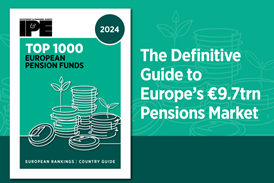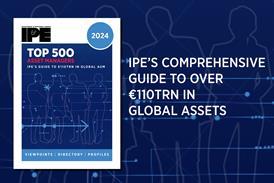The Bank of England (BoE) has opened the Contingent Non-Bank Financial Institution Repo Facility (CNRF) for applications, which will only be activated “during episodes of severe Gilt market dysfunction”, the bank announced.
The CNRF will lend to participating insurance companies, defined benefit (DB) pension schemes and liability-driven investment (LDI) funds to help maintain financial stability, by providing backstop liquidity to these investors, reducing their need to sell assets, the bank added.
CNRF eligibility is targeted at insurers, DB schemes and LDI funds because these are major holders of Gilts and may be exposed to material risk of Gilt sales during shocks.
LDI crisis
In June of 2023, the bank called on UK pension funds along with LDI fund managers to ensure that lessons from the last LDI crisis of September 2022 were learned and fully embedded into their operations and balance sheets.
In the autumn of 2022, the UK saw yields on 10-year Gilts soar from 3.4% to well above 4.4% in less than a week, a rise of nearly 30%. The yield on 30-year Gilts had risen 25%, from a level of around 4% to 5% before the central bank intervened, by announcing that it would carry out “purchases of long-dated Gilts in a temporary and targeted way” to the tune of £65bn to “restore orderly market conditions”.
Fast forward to 2025, a sharp rise in bond yields introduced fresh volatility into the UK financial markets: UK 10-year Gilt yields rose to 4.93% on 9 January, the highest level since 2008, with sterling falling by 0.9% to $1.226 against the dollar, to its weakest since April 2024. However, a repeat of the September 2022 crisis that threatened the UK pension industry is unlikely, according to industry experts.
According to the BoE, the CNRF is a collateralised lending facility that will give cash in return for Gilts, and pricing will be determined at the point of activation.
To maximise effectiveness, participating firms need to hold more than £2bn in Gilts alongside meeting other eligibility criteria. There is an annual fee set at £8,000, which recovers the bank’s ongoing costs of running the facility, it added.
Firms must be onboarded according to the bank’s requirements before they can participate in the facility upon its activation. A firm can either access the tool directly or via an appointed representative.
Vicky Saporta, executive director for markets at the BoE, said: “Opening for CNRF applications marks a significant step forward in our efforts to deal with future episodes of Gilt market dysfunction. Having the ability to lend to eligible non-bank financial institutions in times of severe market stress means we are better equipped to protect financial stability for the benefit of households and businesses throughout the UK.”
Zoe Alexander, director of policy and advocacy at the Pensions Lifetime Savings Association (PLSA), said: ”The PLSA strongly welcomes this facility and has been consulted by the bank during its development. It will provide greater reassurance to defined benefit pension schemes, and their members, that they will be able to obtain liquidity during periods of market dysfunction.”
David Otudeko, interim director of regulation at the Association of British Insurers (ABI), said: “The ABI welcomes the Bank of England’s new CNRF. It is a helpful emergency liquidity tool to be used during periods of severe market dysfunction only, that could temporarily increase demand for liquidity.”
Wyn Francis, Brightwell’s chief investment officer, said: “In times of market stress, having the right tools in place that are easily accessible and can be activated at short notice is imperative for the industry.”
He noted that the introduction of this facility by the BoE “will be a helpful addition” for pension schemes and other non-bank financial institutions that play an increasingly important role in the financial system.
“Looking ahead, the Bank of England could consider broadening the scope of the tool to other core markets, including UK credit,”Francis added.
Read the digital edition of IPE’s latest magazine




































No comments yet